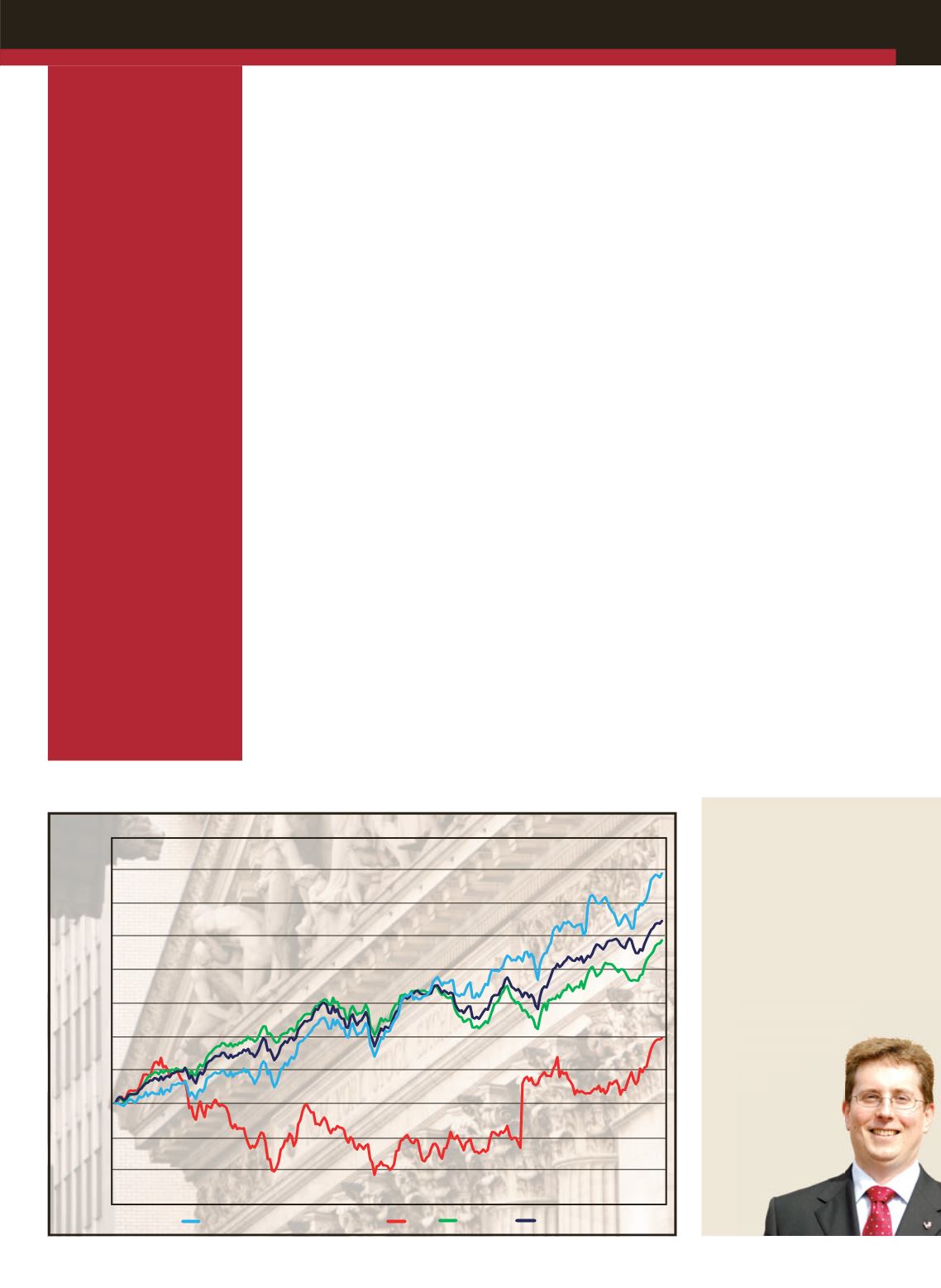
17
FEBRUARY 2014
ACT
BUSINESS NEWS
AUTHOR:
CHRIS SLEIGHT
is
one of the world’s most
internationally renowned
construction business writers,
with specialist expertise in
financial markets and stock
market analysis. He is editor
of KHL’s market-leading
International Construction
and
is a regular contributor to
ACT’
s sister publication,
International Cranes
and Specialized
Transport
.
The New Year saw
stock markets
reach record
highs, despite the
announcement
that the Fed
would phase-out
QE in 2014. So
what will it take
to break up the
party?
Chris
Sleight
reports.
T
he Fed’s Christmas
present to the
markets was its
announcement that it would
phase-out its policy of
quantitative easing (QE) over
the course of 2014 – ‘tapering’
as it has become known.
This is a policy that has seen
some $85 billion per month
– $1,020 billion per year –
being used to buy-up assets
to stimulate the economy. It
is equivalent to printing new
money to invest in assets, but
in fact the money is created
at the push of a computer key,
so the Fed has not even had to
pay-out for ink and paper.
The $1,020 billion that
has been spent annually
throughout the crisis years
is equivalent to about 5
percent of American GDP.
Unsurprisingly the prospect
of this money being pulled
out of the economy has got
some investors worried.
However, the Fed has said
that it will reinstate QE if data
shows tapering to be hurting
economic growth and job
creation.
And despite the news of the
end of QE, stock markets were
in festive high spirits as 2013
came to a close. The Dow
moved back above 16,000
points over the Christmas and
New Year period, and spent
the first few days of January
setting new record highs in
16,500-point territory.
As our graph shows, the
heavy equipment sector saw
some benefit from the year-
end and New Year rally, with
a steep climb in line with the
wider markets. However, it’s
longer-term performance over
the last 12 months has been
disappointing, with weak
market conditions around the
world hitting sales and profits.
The good news is that both
domestic and international
economic growth is expected
to be stronger this year than
in 2013. It may need to be.
The remarkable 25 percent
to 35 percent growth of
mainstream indicators like the
Dow, NASDAQ and S&P 500
this year means that sooner
or later investors are going to
start taking profits.
ACT Heavy Equipment Index (HEI)
DOW
NASDAQ
S&P 500
40%
35%
30%
25%
20%
15%
10%
5%
0%
5%
-10%
-15%
% change
52 weeks to January 2014
Stronger economic growth
this year may also mean that
the appetite for risk and more
diverse investments increases.
Again, this will probably pull
indexes like the Dow down,
as money is taken from these
relatively safe havens, and put
to work in areas of greater
potential risk and return.
So perversely, it may be that
a stronger economy this year
will lead to a stock market
slump.
There are also seasonal
factors to consider. Markets
traditionally rally towards the
end of the year and on into
January, with the year-end
results season, which starts in
earnest in the fourth week of
the year, usually serving to as
a reality check.
So while it is positively
foolhardy to make market
predictions in the current
climate, experience would
suggest that the highs that
have been set in the first
few weeks of the year will
probably stand for several
months at least, if not much
longer.
■
ACT’
s Heavy Equipment Index
(HEI) tracks the performance
of eight of America’s most
significant, publicly-traded
construction equipment
manufacturers – Astec
Industries, Caterpillar, CNH,
Deere & Company, Joy Global,
Manitowoc and Terex.
What hangover?


